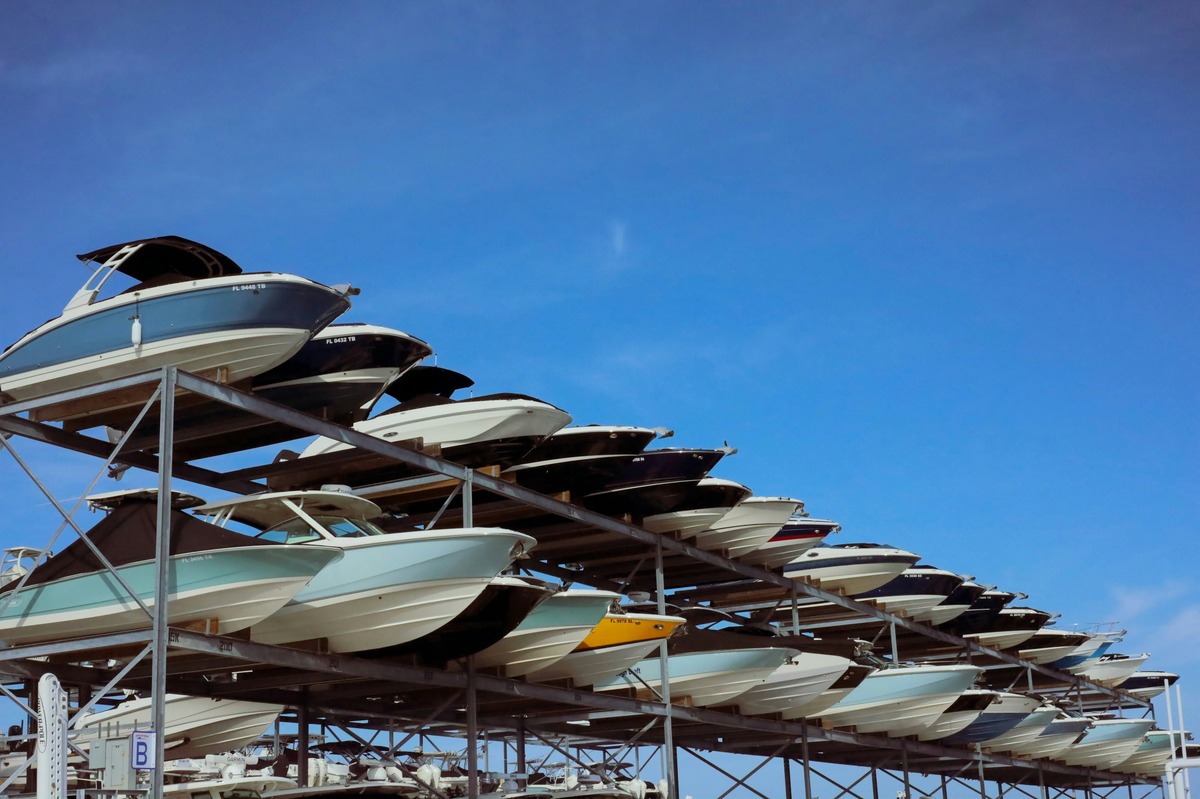When it comes to storing your boat, choosing between indoor and outdoor storage is an important decision for boat owners. Each option has its advantages and disadvantages, depending on your needs, budget and location. Here is a short comparison to help you decide.
Indoor storage for boats
Complete protection against the elements
Boats that are stored inside, experience less wear, which you can save on repairs and maintenance in the long term.
If you live in an area with harsh winters or strong sunlight exposure, indoor storage is ideal to prevent damage due to the weather.
Preserving the quality of the boat
Because your boat is protected against the elements, indoor storage helps to maintain the outside finish, interior materials and mechanical parts. UV rays of the sun can break down materials such as vinyl and fiber optic, while moisture of rain or snow can lead to mold, rust and other problems.
Increased security
Indoor storage facilities often have better security measures than outdoor storage.
Many indoor storage locations for boats offer camera surveillance, access controls and personnel monitoring, making it much more difficult for thieves or vandals to get to your boat.
If you have a luxury boat or just want peace of mind, this extra security can be a big advantage.
Higher costs and space restrictions
The biggest disadvantage of inner storage is the price. It is generally more expensive than outdoor storage, and the costs can vary depending on the location and the size of your boat.
Moreover, large boats may not fit in all indoor facilities, and the space can be limited, especially during the high season for storage. It is therefore important to reserve early.
Outdoor storage for boats
Cost effective and handy
Outdoor storage is usually cheaper than indoor options, which makes it a popular choice for boat owners with a limited budget.
There are different ways to save a boat outside, such as on a trailer, in a Marina ligplace or in drying pile storage.
Weather exposure and the risks thereof
The biggest disadvantage of outside storage is the exposure to the weather. Without the protection of a building, your boat is exposed to sun, rain, snow and wind.
Over time, UV rays can make the paint fade, make vinyl covering burst and damage plastic parts. Moisture of rain or snow can lead to mold, mildew and rust, which can be harmful to the hull and the interior of your boat.
However, with the right care, such as the use of a high -quality boat cover or the contraction packs of your boat, you can reduce the impact of weather influences.
Larger boats and easy access
Outdoor storage offers more options for larger ships that may not fit in indoor facilities. Many marinas and dry stacking services can accommodate boats of all sizes.
Moreover, outdoor storage offers easier access if you are planning to use your boat regularly. Boats stored in a Marina ligplace or on a trailer are easy to launch when you are ready to sail.
Regular boat maintenance
Regardless of whether you opt for indoor or outdoor storage regular boot maintenance is essential to keep your vessel in good condition.
This includes cleaning the hull, checking the engine, inspecting seals and ensuring that the electrical systems of the boat function properly.
Conclusion
If protection and sustainability are your highest priorities, indoor storage is the best option. For those who are looking for a budget -friendly solution, outdoor storage with the correct cover and maintenance can be a practical choice.


